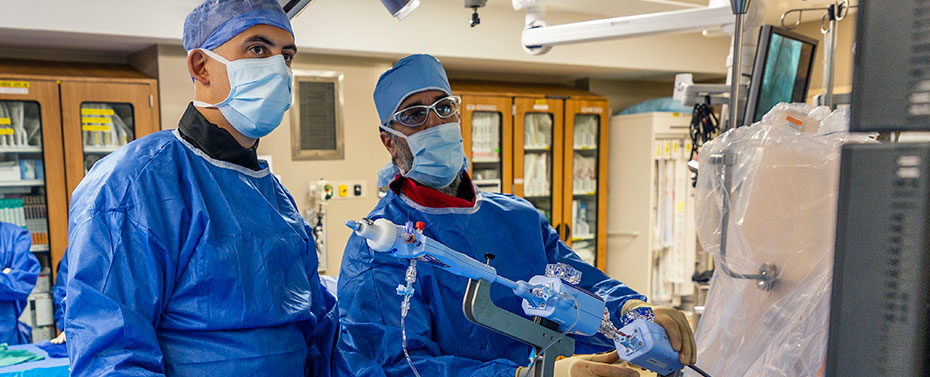MitraClip Procedure

Mitral regurgitation is a form of heart valve disease. If you have mitral regurgitation, your mitral valve does not function properly, causing blood to leak backward into other areas of your heart. This condition causes increased stress on the heart and increases blood pressures in the lung. Over time, mitral regurgitation can lead to congestion or built-up fluid in your lungs.
If lifestyle changes and medication aren’t enough, your doctor may recommend a procedure to treat your mitral regurgitation. Our cardiovascular experts often perform open-heart valve repair or replacement surgery to address this problem. However, you may be eligible for a minimally invasive treatment option called transcatheter mitral valve repair using the MitraClip device. Englewood Health’s cardiovascular surgeons are highly trained and experienced in the MitraClip procedure.
The MitraClip has expanded transcatheter structural heart therapeutics to the next level. This is the first procedure that’s been FDA approved to correct mitral valve abnormalities in high-risk patients who are not candidates for an open procedure.
Dr. Adam Arnofsky, Chief of Cardiothoracic Surgery
MitraClip Procedure for Mitral Regurgitation
Our team will thoroughly evaluate your condition to determine if you’re a candidate for a MitraClip procedure. Your doctor explains the procedure in detail, but the process typically involves these steps:
- Prepare for surgery: Your procedure takes place in our cardiac catherization lab. You receive general anesthesia to put you in a deep sleep, and you breathe with help from a ventilator. We use fluoroscopy (a type of X-ray) and echocardiography (a type of ultrasound) to see inside your body during the procedure.
- Enter the blood vessel: Your doctor makes a small needle stick in your groin, then passes a tube through the leg vessels to the right side of your heart.
- Access the mitral valve: We pass the tube to the left side of the heart to access the mitral valve. Then we pass the MitraClip device through this tube using a delivery system. We use a blood thinner called heparin to ensure no clots form during the delivery.
- Position the MitraClip device: We place the MitraClip over the leaky mitral valve, using the delivery system to adjust the position. The MitraClip passes below the mitral valve, pulls back upward and grasps the valve flaps.
- Secure the MitraClip: We close the “arms” of the Mitraclip, secure it into position, and detach it from the delivery system. The device stays in your heart permanently, allowing your mitral valve to close more tightly and reduce backward blood flow. You may need more than one MitraClip device to fully repair your mitral valve.
- Complete ongoing follow-up: During and after your recovery, you’ll have regular appointments with your cardiologist to ensure the device is working properly.

